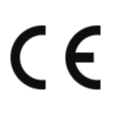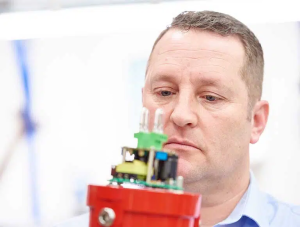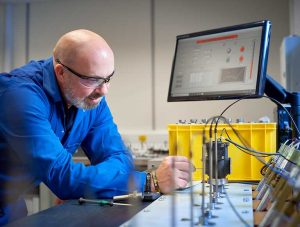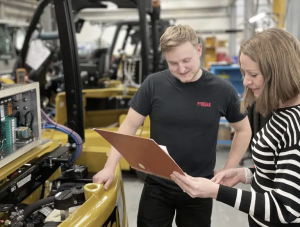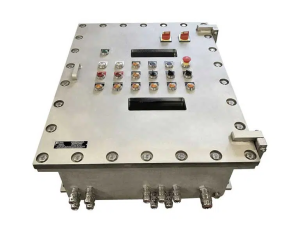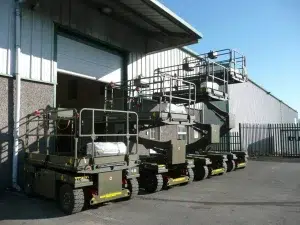Ex Signalling Beacons: A Guide to Explosion Proof Devices
17 October 2024
Businesses operating with potentially explosive atmospheres need lighting beacons to quickly communicate and draw attention to specific areas, hazards, or activities in a process or plant. However, a cheap standard device or fake “Ex” beacon from an online retailer for example could potentially cause an explosion. Here’s why and what hazardous area operations should look out for in an explosion proof beacon.
What is a Signalling Beacon?
In any industry, operation or organisation, signal beacons transmit a visual signal to communicate information over a distance. They can be used for several purposes, such as navigation, for emergency and operational alerts, or communicate a hazard or fault condition. Emergency and alert beacons for example draw attention to a particular condition or hazard that necessitates evacuation or preventative action and ensures compliance with certain safety regulations.
Beacons come in a range of formats, for example with flashing lights, fixed indicators, or rotating units, and can be operated as standalone devices or integrated into a wider warning system, such as an alarm system. Signalling beacons complement audible devices, such as sounder horns and alarms, especially in noisy environments where audible warnings could be difficult to hear and less effective.
There are many factors that determine the visual range of a signal beacon beyond the bulb type. These include the beacon’s intrinsic design, lens or reflector quality, and installation height. Certain devices can also be customised to suit different illumination and paint colour preferences.
![]()
But what happens when a beacon is needed in an area that is potentially explosive? First, it’s important to understand about hazardous areas and the legal obligations.
What is a Zoned hazardous area?
Any operation handling or storing flammable material will need to assess and classify their areas of operation according to the materials and the risk.
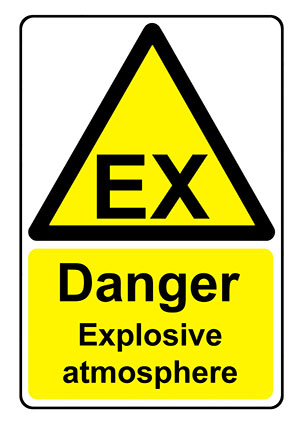 In Europe and many parts of the world this involves classifying areas in line with the ATEX Directives. Zone 1 or Zone 2 is used to define areas where flammable gas or vapour is present, while Zone 21 or Zone 22 signifies that there are powder or dust hazards.
In Europe and many parts of the world this involves classifying areas in line with the ATEX Directives. Zone 1 or Zone 2 is used to define areas where flammable gas or vapour is present, while Zone 21 or Zone 22 signifies that there are powder or dust hazards.
Zone 1 is a place in which an explosive atmosphere consisting of a mixture with air or flammable substances in the form of gas, vapour or mist is likely to occur in normal operation occasionally. These are typically process areas where gases are more likely to be present.
Zone 2 is described as an area where [it’s] not likely to occur in normal operation, but if it does occur, will persist for a short period only.
Zone 21 and Zone 22 follow a similar pattern of risk definition for dust and powder hazards.
It’s likely that most businesses have already classified their areas due to strict health and safety regulations across Europe, which means that ANY equipment in those areas have to meet certain safety specifications. Compliance with the ATEX Directive or IECEx (an international system that certifies equipment for use in explosive environments) is a fundamental requirement.
Sounders, switches, machinery, forklifts and more need to meet these safety standards, lighting beacons included!
What is an Explosion Proof Signalling Beacon?
Signalling beacons for ATEX Zones, also known as hazardous areas or potentially explosive atmospheres, are specially designed to operate safely in environments where there is a risk of explosion due to the presence of flammable gases, vapours, dust, or powders.
These Zones are commonly found in industries such as oil and gas, chemical processing, petrochemical, pharmaceutical, waste and many different manufacturing and logistics operations. Controlling explosive atmospheres is crucial, and the regulatory framework, including the ATEX Directives, ensures health and safety in such workplaces.
The characteristics of signal beacons used in ATEX Zones include:
- Flameproof (Explosion-proof) design: These beacons are built to contain any sparks or flames that might be produced inside the device, preventing them from igniting the surrounding hazardous atmosphere. This is typically achieved through robust, flameproof Ex d casings (enclosures) as seen in the image above.
- Built-in safety: Some beacons are engineered to operate with low electrical and thermal energy
- Compliance with standards: Lighting beacons for hazardous areas must comply with international and regional standards and certifications, including ATEX (Atmosphères Explosibles) in Europe and IECEx (International Electrotechnical Commission Explosive).
- Durability and reliability: Explosion proof beacons are typically built to withstand harsh environmental conditions, including extreme temperatures, moisture, dust, and corrosive substances. They must remain operational in challenging conditions to ensure continuous safety, such as in offshore salty conditions
Fake or low-quality explosion proof beacons are available from some online retailers and should be avoided as they are not fit for purpose and could put an operation at potential risk.
What makes Ex-tech Signalling Signal Beacons good for hazardous areas?
Ex-tech Signalling Beacons have all necessary explosion proof safety characteristics, with full ATEX and IECEx certification. The BC 125 explosion proof beacon is constructed from 316L stainless steel while the BC 150 explosion proof beacon uses a glass-reinforced polyester (GRP) housing. Both are treated with UV resistant paint to prevent chemical corrosion. The bulb lens is made from corrosion and temperature resistant borosilicate glass, with an optional stainless-steel guard available for added protection.
Users can choose between two different light sources – LED with steady, rotary, fixed or blinking power or flashing light with Xenon tube – and four flashing frequencies. Other accessories are available for customisation.
But how do you decide on bulb type?
Best bulb types for Ex zones
While there are several bulb types available for beacons, depending on visibility and functional requirements, some are more suited to ATEX Zones than others. As such, it is important to understand the fundamental differences:
- Xenon bulb: These are incandescent bulbs with a tungsten filament surrounded by xenon gas that glows when stimulated by electricity. Xenon lamps are energy efficient and last longer than alternatives, such as Halogen or standard incandescent lights. They also produce less heat and fewer ultraviolet (UV) emissions. In addition, xenon gas can slow the decay of the tungsten filament and extend the bulb lifespan. These properties make them ideal for light and heavy industry signalling applications, including in hazardous areas.
- LED bulb: The mechanism in light-emitting diodes (LEDs) relies on an electric current that rearranges electrons to stimulate the release of energy in the form of photons (light). Compared to other bulb types, LED lights are generally the most efficient, long-lasting, produce the lowest amount of heat and UV emissions, and have the largest light output. For Ex Zones, LEDs need explosion proof enclosures to contain any internal spark and prevent any potential flame from escaping into any external flammable material, ensuring proper explosion protection. Modern LED technology has advanced significantly, allowing for more compact and efficient designs that can achieve long ranges with lower power consumption.
What do the different colour beacons represent?
Green lens explosion proof beacons
Green explosion proof beacons should denote a safe or normal state of operation requiring no immediate action. It is not a warning colour. Many plants for example use a green signalling beacon to simply communicate that the plant is in operation. In a hazardous area at a manufacturing site for example, a green beacon light could also signify pressure or temperature is in a normal range.
Yellow and amber lens explosion proof beacons
Yellow or amber ATEX beacons are often used to help warn against moderate dangers and typically signal the need for human monitoring or intervention, such as an overload or surpassing standard values. In hazardous areas for example, an amber beacon light is critical where toxic and/or combustible gases, dust or liquids may be released through a vent into the atmosphere.
Red lens explosion proof beacons
Red flameproof beacons are usually associated with danger, an emergency situation that requires immediate action or system failure. This is the same for red explosion proof beacons so that when they light up they communicate the highest level of urgency.
Blue lens explosion proof beacons
Blue explosion proof beacons are normally associated with the emergency services particularly in the UK and Europe but are also often used as an alternative to red beacons. Additionally, they too can be used to signify a specific condition requiring intervention by an operator.
Clear/white lens explosion proof beacons
Despite their brightness, an opaque / clear / white flameproof beacon is unsuitable for drawing attention to dangers or hazards and they carry no distinct significance. Some applications may use them for very specific purposes.
For more information about explosion proof beacons required in hazardous areas, contact the Ex-tech Signalling team or one of our trusted local distributors.

